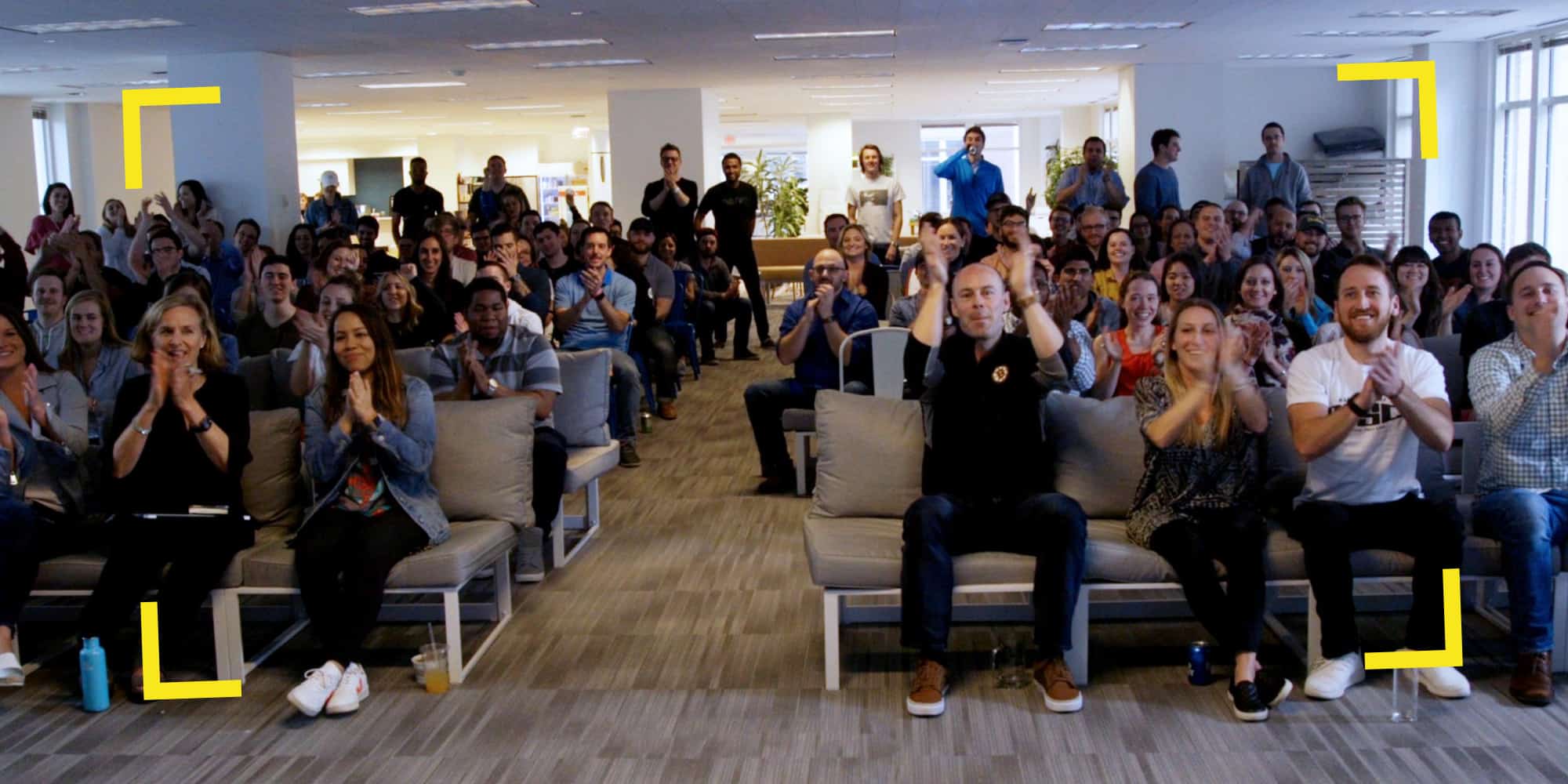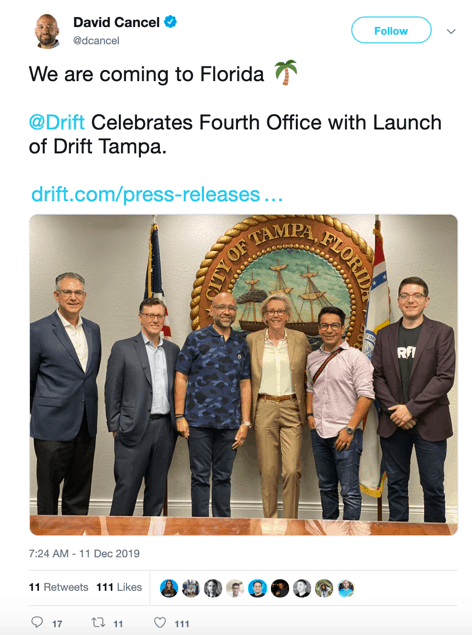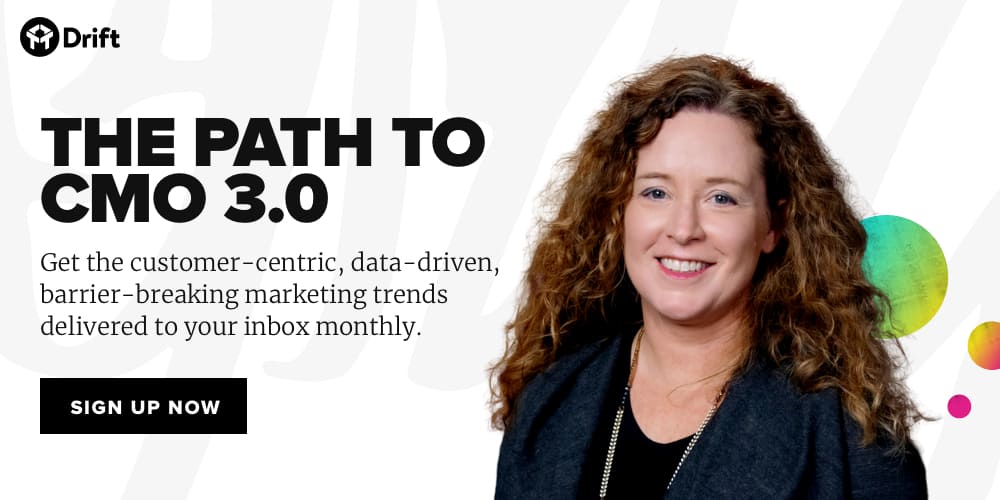
“Again and again, we see promising, disruptive companies rocketing to success, but powered by a workplace culture that drives people into the ground.”
– Arianna Huffington, Founder & CEO, Thrive Global
?That’s what Arianna Huffington wrote in response to a recent exposé from The Verge on the work culture fueling startup darling Away.
In the follow-up article, Huffington referred to this type of culture as “the hypergrowth-to-burnout pipeline.” Having previously been on the board of companies including Uber, Huffington has seen this similar story play out before.
As she explains, these environments often spring not because of malicious intent, but because of a culture that pushes results at any cost.
At Drift, we also consider ourselves a hypergrowth company.
At the start of 2019, we had 249 employees. By the end of the year, we added 185+ new hires and opened a new office in Tampa.
As we scale and grow as a company, we are focusing on projects that ensure our employee experience doesn’t suffer. This year, we expanded our People department, we invested deeply in diversity and inclusion, we turned feedback into a major decision driver, and our leaders are holding themselves to the same standards as any employee. But there is always work to be done and we’ll continue this work throughout 2020.
So, why is investing proactively in the employee experience so important? Here are three reasons:
- It allows us to retain the top talent we’re lucky enough to have, and ensure that Drift employees excel professionally and personally both in and outside of the company.
- It addresses the added pressure employees feel during a time like hypergrowth and encourages a healthy workplace culture.
- It will enable us to continue growing and attracting some of the best and brightest.
Defining Your Employee Experience
The employee experience is the collection of interactions an employee has over their lifecycle with a company.
While a lot has been written about what drives a positive employee experience, much is simply common sense. Employees want to find meaning in their work, they want trust and transparency in the workplace, they want an environment that is inclusive, and they want opportunities to grow their skills and careers.
Drift’s leadership principles focus on marrying customer experience and employee experience. We’ve done this because it is our belief that the employee experience is intrinsically connected to a positive customer experience:
- Put the customer at the center of everything you do
When we understand how we’re positively impacting the lives of our customers, a greater sense of meaning grows around the work we do. Putting the customer at the center of what we do has also opened a lot of opportunities for our employees, both in the creation of new positions and the expansion of our daily work. - Create a culture of respect and trust
Respect breeds trust – plain and simple. We are respectful of the diverse people and opinions at Drift. As we grow, this principle becomes even more important to creating an inclusive and safe workplace. - Practice extreme ownership
Finding meaning in your work and creating an environment of trust can only happen if people know that they truly own what they do. Because of that, we ask every employee to practice extreme ownership. This again breeds additional opportunities as employees feel freer to explore ideas. - Have a bias for action and deliver daily results
Opportunities only arise when we take action. We have an incredible staff of go-getters who love to share ships every day. As a result, we have created a culture that celebrates wins, supports each other, and grows together through failure. - Seek feedback, not consensus
It’s amazing how much red tape can hinder a company’s growth. We empower our employees to be transparent with their work and seek feedback to improve that work. Because we enable people to own their work, we also allow them to drive that work’s destiny. - Push for high standards
Speed is great, but pointless without quality. If we put the customer at the center of everything we do, that means quality always takes center stage. At Drift, we want people to feel proud of the work they do and support them with the tools and team to do so. - Stay scrappy
Perfect isn’t real. And we’re not interested in putting our employees in a position where that is expected of them. Even though we’ve experienced a lot of success, we still encourage our employees to not wait for the “perfect solution” to come along. - Be a curious learning machine
Learning doesn’t stop in the classroom. We’re interested in helping our employees grow professionally and personally. We offer opportunities for employees to expand their skills, define their career growth, and explore diverse projects and experiments.
How are you defining a great employee experience at your company? What impact does this positive experience have on your workplace culture and customer experience?
How To Build A Healthy Workplace Culture During Hypergrowth
When it comes to building a startup or leading a company through hypergrowth, creating a healthy culture starts with leadership. Huffington says that disruptor brands are no longer measured by just growth alone, but by the health of their workplace.
Early founders should prioritize not just products and services, but the core values that will impact culture in the long-term.
Moz founder and former CEO Rand Fishkin said creating a winning culture comes down to three things: core values, a mission and a company’s talent strategy.
“If you’re trying to figure out what a company’s values really are, look at the decisions management makes when lots of money, risk, or loss of face for executives is at odds with the stated values. Want to know the company’s mission and vision? Look at what they’ve intentionally chosen not to do, even though it could be lucrative.”
– Rand Fishkin, Founder & CEO of Moz
Once a founder creates the foundation for a company’s culture, they need to communicate that culture to employees and investors. The best way to do this is by working with department leaders to embed that culture throughout the organization.
When I was the CMO of Checkr, I collaborated with the talent team to improve employee culture and build a brand that our teams could get behind. I’m continuing this same mission and collaboration now as Drift’s CMO. Through both these experiences, I’ve learned that the only way to build a better culture is to be part of it.
As a leader, that means making time to connect with your people.
The larger a team grows, the easier it becomes for leaders to distance themselves. The greater that distance is, the harder it is to connect with and lead your people. Leaders set the tone for a company’s culture. I take this responsibility very seriously. I believe if other leaders do the same, we could truly improve the lives of our employees. I have found that slowing down and listening to people creates a culture of approachability and accessibility which is key to connection.
Taking The Next Steps
We learned at Drift that if you want to understand the health of your workplace culture, you need employee feedback.
As you grow, feedback is the best way to adapt quickly to employee needs and keep on top of sentiment. Over the last year, we’ve put a lot more stock in capturing and acting on employee feedback. Drift uses a number of platforms to measure the employee experience, including weekly, monthly and quarterly surveys.
Based on the feedback we’ve already received, we’ve created company rituals and programs that focus on improving onboarding, career development, personal enrichment and team building:
Based on the feedback we’ve already received, we’ve created company rituals and programs that focus on improving onboarding, career development, personal enrichment and team building:
- Inclusion initiatives: A healthy workplace culture is respectful of the diverse opinions and identities that make up a workforce, customer base and the broader tech and global communities. It was this thinking that led us to create a formalized ERG (employee resource groups) program. ERGs provide company-based resources for employees to form inclusive groups and create a sense of community.
“ERGs are an important aspect of Drift’s culture and not only create a sense of community, but also contribute to the company by sharing a unique point of view, helping create a more diverse employee base, and developing our people in new ways. While historically the groups that have emerged have represented gender and ethnic minorities, any group of a significant size that feels it has an aligned objective should consider if a formal ERG is right for them.”
– Kiera Penpeci, IED Business Partner, Drift
- Owning Your Career/Mentorship Series: Providing employees with resources for professional development is critically important to retention and company success. The Owning Your Career series looks to help Drift’s employees newer in their careers better navigate their trajectory and growth. Topics for this series might include a 1,2, 5-year career plan and operationalizing that vision through feedback, career conversations, and day-to-day actions.The Drift Mentor series invites outside experts to speak with employees on their experience and provide career advice and guidance in their fields. Past guests have included Molly Graham, a former Facebook executive, and Robyn Glaser of Kraft Corporation.
- Improving the employee lifecycle: Additional employee feedback shaped recent changes to our onboarding and parental leave policies. Specifically, we’ve streamlined dedicated “onboarding” days to acclimate employees to the Drift product and their team. On the benefits side, we’ve updated our paternal leave policy to extend to “secondary caregivers.” This enables both parents, regardless of gender, to take the time off they need for their child.
- Inside Drift newsletter: We have a number of newsletters we ship, however, the “Inside Drift” newsletter is an internal employee email sent out weekly that includes everything from the “top 5 things” to know for the week, to open positions, to content we shipped. As our workforce grows, culture pieces like these become increasingly important in creating a sense of community on our team.
These are just some of the steps we’ve taken to make Drift the best possible place it can be – for our employees and our customers. We know we’re not perfect, but we’ll continue to improve every day. The employee and customer experience are not a “one and done” initiative – they’re a constant work in progress.
The best way for companies to continue to improve the employee experience is to listen and learn from others. What are you doing to improve the lives of your employees in 2020? Reach out to me on LinkedIn or Twitter.









